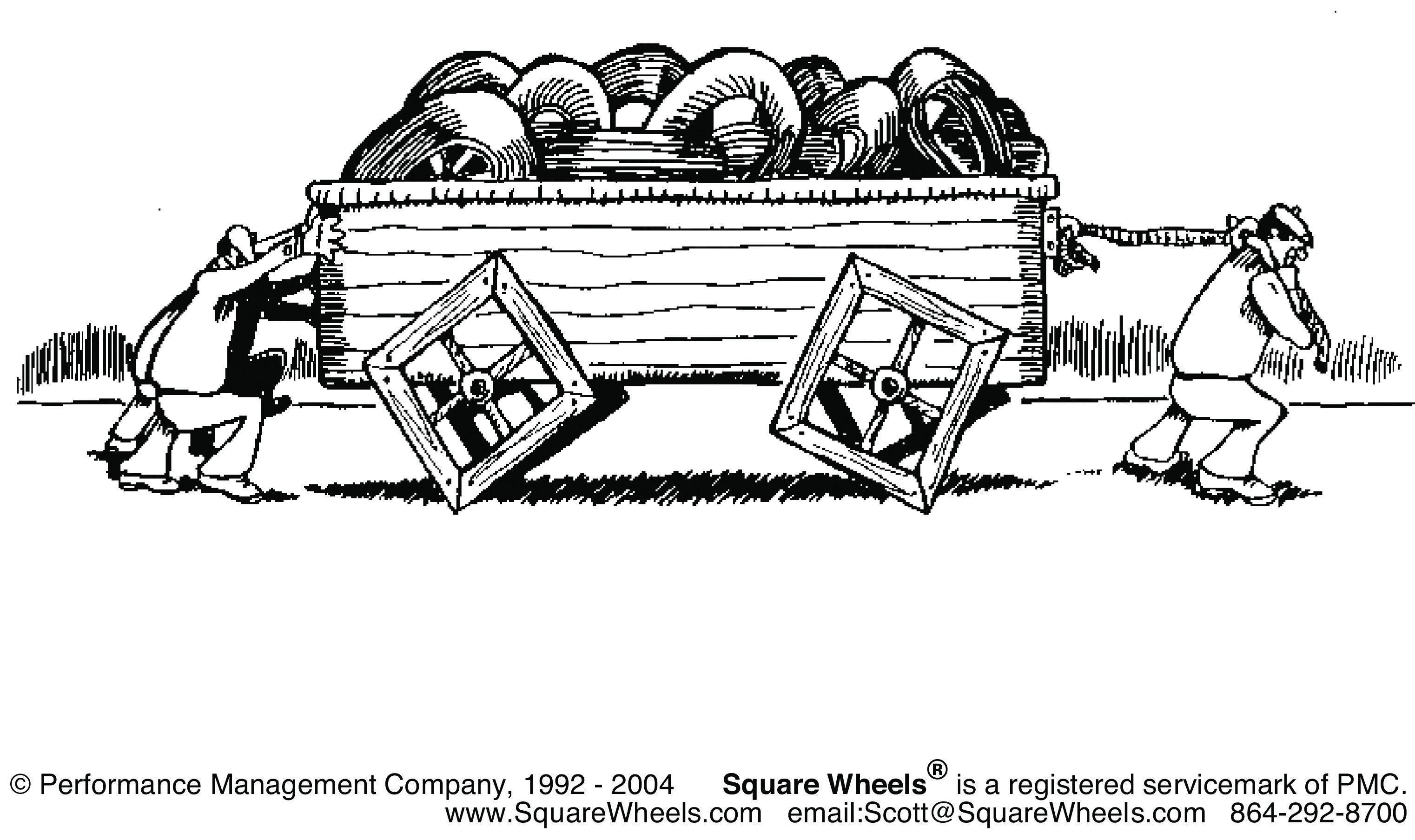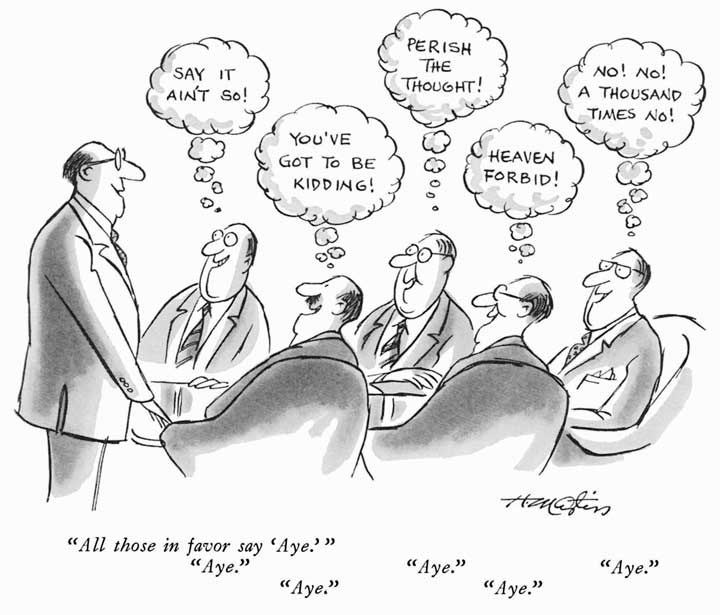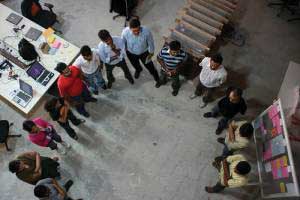This is “Management of Teams”, section 9.4 from the book An Introduction to Organizational Behavior (v. 1.1). For details on it (including licensing), click here.
For more information on the source of this book, or why it is available for free, please see the project's home page. You can browse or download additional books there. To download a .zip file containing this book to use offline, simply click here.
9.4 Management of Teams
Learning Objectives
- Understand how to create team norms, roles, and expectations.
- Identify keys to running effective team meetings.
Establishing Team Norms
Team Norms
NormsShared expectations about how things operate within a group or team. are shared expectations about how things operate within a group or team. Just as new employees learn to understand and share the assumptions, norms, and values that are part of an organization’s culture, they also must learn the norms of their immediate team. This understanding helps teams be more cohesive and perform better. Norms are a powerful way of ensuring coordination within a team. For example, is it acceptable to be late to meetings? How prepared are you supposed to be at the meetings? Is it acceptable to criticize someone else’s work? These norms are shaped early during the life of a team and affect whether the team is productive, cohesive, and successful.
Square Wheels Exercise and Group Discussion
Sometimes it can be challenging to start a conversation around team ground rules and performance. The following exercise can be used to get individuals talking about what works and what doesn’t work in teams they’ve worked in and how your team can be designed most effectively.
Figure 9.10

Used with permission. © Performance Management Company, 1992–2004. Square Wheels® is a registered servicemark of PMC.
What is happening in this picture represents how many organizations seem to operate. On a piece of paper have everyone in your team write on this form and identify as many of the key issues and opportunities for improvement as you can. Following this, have a conversation around what this illustration might mean for your own team.
Team Contracts
Scientific research, as well as experience working with thousands of teams, show that teams that are able to articulate and agree on established ground rules, goals, and roles and develop a team contractAgreements on established ground rules, goals, and roles. around these standards are better equipped to face challenges that may arise within the team.Katzenback, J. R., & Smith, D. K. (1993). The wisdom of teams. Boston, MA: Harvard Business School; Porter, T. W., & Lilly, B. S. (1996). The effects of conflict, trust, and task commitment on project team performance. International Journal of Conflict Management, 7, 361–376. Having a team contract does not necessarily mean that the team will be successful, but it can serve as a road map when the team veers off course. The following questions can help to create a meaningful team contract:
-
Team Values and Goals
- What are our shared team values?
- What is our team goal?
-
Team Roles and Leadership
- Who does what within this team? (Who takes notes at the meeting? Who sets the agenda? Who assigns tasks? Who runs the meetings?)
- Does the team have a formal leader?
- If so, what are his or her roles?
-
Team Decision Making
- How are minor decisions made?
- How are major decisions made?
-
Team Communication
- Who do you contact if you cannot make a meeting?
- Who communicates with whom?
- How often will the team meet?
-
Team Performance
- What constitutes good team performance?
- What if a team member tries hard but does not seem to be producing quality work?
- How will poor attendance/work quality be dealt with?
Team Meetings
Anyone who has been involved in a team knows it involves team meetings. While few individuals relish the idea of team meetings, they serve an important function in terms of information sharing and decision making. They also serve an important social function and can help to build team cohesion and a task function in terms of coordination. Unfortunately, we’ve all attended meetings that were a waste of time and little happened that couldn’t have been accomplished by reading an e-mail in 5 minutes. To run effective meetings, it helps to think of meetings in terms of three sequential steps.Haynes, M. E. (1997). Effective meeting skills. Menlo Park, CA: Crisp.
Before the Meeting
Much of the effectiveness of a meeting is determined before the team gathers. There are three key things you can do to ensure the team members get the most out of their meeting.
Is a meeting needed? Leaders should do a number of things prior to the meeting to help make it effective. The first thing is to be sure a meeting is even needed. If the meeting is primarily informational in nature, ask yourself if it is imperative that the group fully understands the information and if future decisions will be built upon this information. If so, a meeting may be needed. If not, perhaps simply communicating with everyone in a written format will save valuable time. Similarly, decision-making meetings make the most sense when the problem is complex and important, there are questions of fairness to be resolved, and commitment is needed moving forward.
Create and distribute an agenda. An agenda is important in helping to inform those invited about the purpose of the meeting. It also helps organize the flow of the meeting and keep the team on track.
Send a reminder prior to the meeting. Reminding everyone of the purpose, time, and location of the meeting helps everyone prepare themselves. Anyone who has attended a team meeting only to find there is no reason to meet because members haven’t completed their agreed-upon tasks knows that, as a result, team performance or morale can be negatively impacted. Follow up to make sure everyone is prepared. As a team member, inform others immediately if you will not be ready with your tasks so that they can determine whether the meeting should be postponed.
During the Meeting
During the meeting there are several things you can do to make sure the team starts and keeps on track.
Start the meeting on time. Waiting for members who are running late only punishes those who are on time and reinforces the idea that it’s OK to be late. Starting the meeting promptly sends an important signal that you are respectful of everyone’s time.
Follow the meeting agenda. Veering off agenda communicates to members that the agenda is not important. It also makes it difficult for others to keep track of where you are in the meeting.
Figure 9.11

© The New Yorker Collection. 1979. Henry Martin from cartoonbank.com. All rights reserved.
Figure 9.12

Conducting meetings standing up saves time yet keeps information flowing across the team.Bluedorn, A. C., Turban, D. B., & Love, M. S. (1999). The effects of stand-up and sit-down meeting formats on meeting outcomes. Journal of Applied Psychology, 84, 277–285. This technique is used by Johnson & Johnson Services Inc., Ritz-Carlton Company LLC, ThoughtWorks Inc., Agile Software, and Corning Inc.
Source: Photo used by permission of Jason Yip.
Manage group dynamics for full participation. As you’ve seen in this chapter, a number of group dynamics can limit a team’s functioning. Be on the lookout for full participation and engagement from all team members, as well as any potential problems such as social loafing, group conflict, or groupthink.
Summarize the meeting with action items. Be sure to clarify team member roles moving forward. If individuals’ tasks are not clear, chances are that role confusion will arise later. There should be clear notes from the meeting regarding who is responsible for each action item and the time frames associated with next steps.
End the meeting on time. This is vitality important, as it shows that you respect everyone’s time and are organized. If another meeting is needed to follow up, schedule it later, but don’t let the meeting run over.
After the Meeting
Follow up on action items. During the meeting, participants probably generated several action items. It is likely that you’ll need to follow up on the action items of others.
Key Takeaway
Much like group development, team socialization takes place over the life of the team. The stages move from evaluation to commitment to role transition. Team norms are important for the team process and help to establish who is doing what for the team and how the team will function. Creating a team contract helps with this process. Keys to address in a team contract are team values and goals, team roles and leadership, team decision making, team communication expectations, and how team performance is characterized. Team meetings can help a team coordinate and share information. Effective meetings include preparation, management during the meeting, and follow-up on action items generated in the meeting.
Exercises
- Have the norms for most of the teams you have belonged to been formal or informal? How do you think that has affected these teams?
- Have you ever been involved in creating a team contract? Explain how you think that may have influenced how the team functioned.
- Should the person requesting a meeting always prepare a meeting agenda? Why or why not?
- Do you think conducting team meetings standing up is a good idea? Why or why not?




